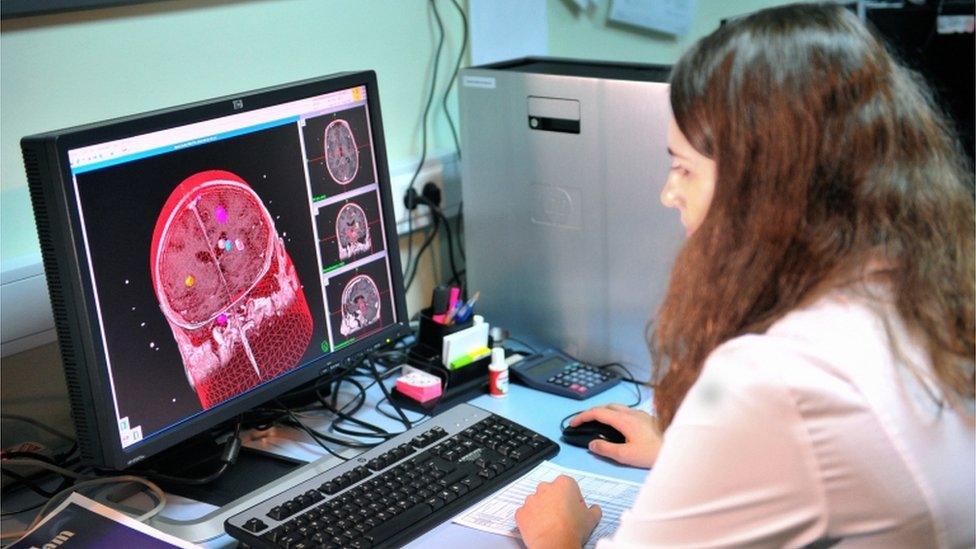New brain injury test could improve patient care
- Published
- comments

A new test to measure the severity of a brain injury could improve patient care, researchers say.
Experts from Glasgow and Edinburgh universities teamed up to improve the Glasgow Coma Scale , external(GCS), which helps doctors assess patient consciousness.
Measuring pupil reactivity to light could assist with treatment decisions for brain injuries, they say.
A major advantage of the new test would be the speed at which it could be adopted by doctors.
'Rapid insights'
The GCS was developed in 1974 at the University of Glasgow and the Southern General Hospital and is used in more than 80 countries worldwide.
The 13-point scale guides treatment decisions and monitors trends in responsiveness, taking eyes, speech and movement into account.
Using the health records of 15,000 patients, the study found assessment of pupil reactivity - named GCS-Pupil or GCS-P - would have improved doctors' ability to predict patients' conditions six months after a brain injury.
Co-leader of the study, Dr Paul Brennan from the Centre for Clinical Brain Sciences in Edinburgh, said: "The importance of the Glasgow Coma Scale to medicine cannot be overstated and our simple revision really improves its predictive ability and usefulness.
"Making major decisions about brain injured patients relies on quick assessments and the new method gives us rapid insights into the patient's condition."

Almost 350,000 hospital admissions as a result of damage to the brain in the UK per year - an average of one every 90 seconds.
Earlier this year, Sport Scotland issued new guidelines on dealing with concussion during physical activity.
The guidelines state all head injuries should be assessed by a healthcare professional and people wit persisting symptoms, including headache, vomiting or unusual behaviour, should be reviewed at A&E.
Prof Sir Graham Teasdale, who first developed the GCS, said: "The GCS-P will be a platform for bringing together clinical information in a way that can be easily communicated and understood."
The study was published in the Journal of Neurosurgery , external.